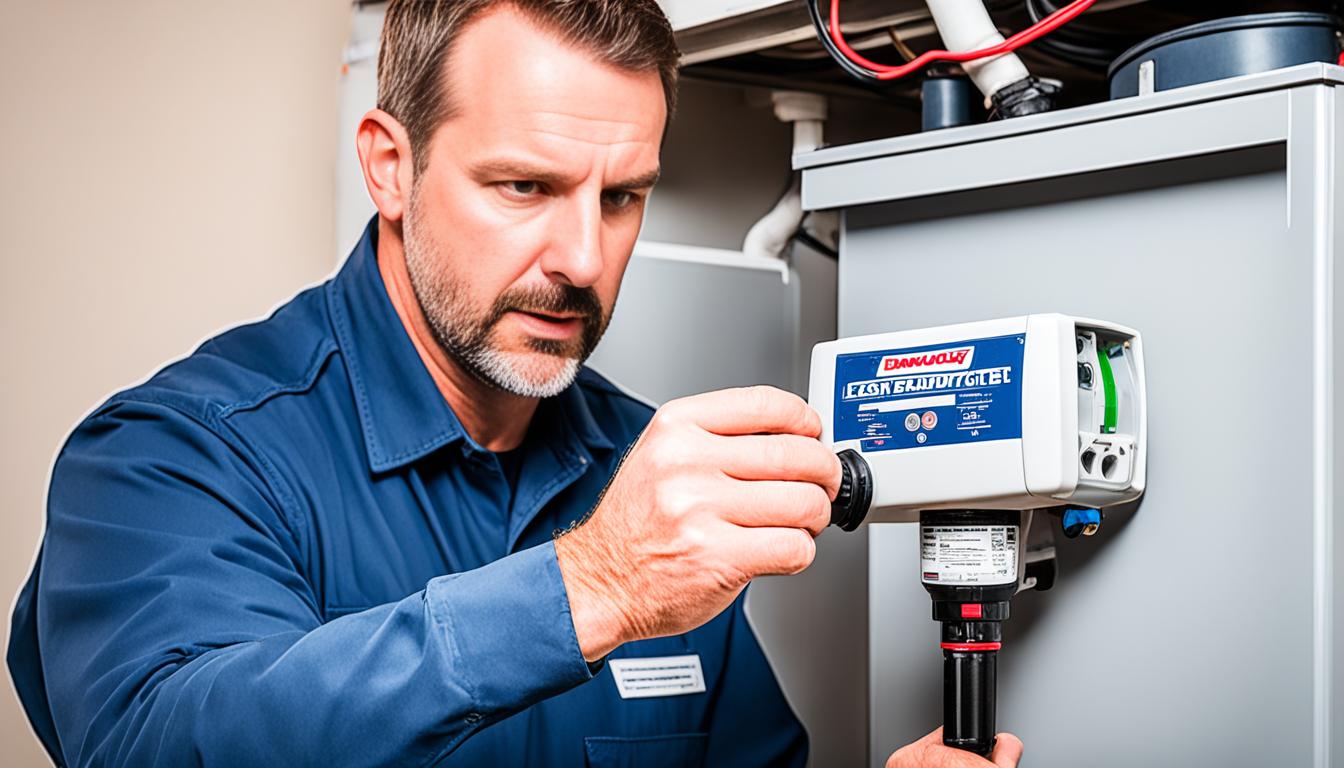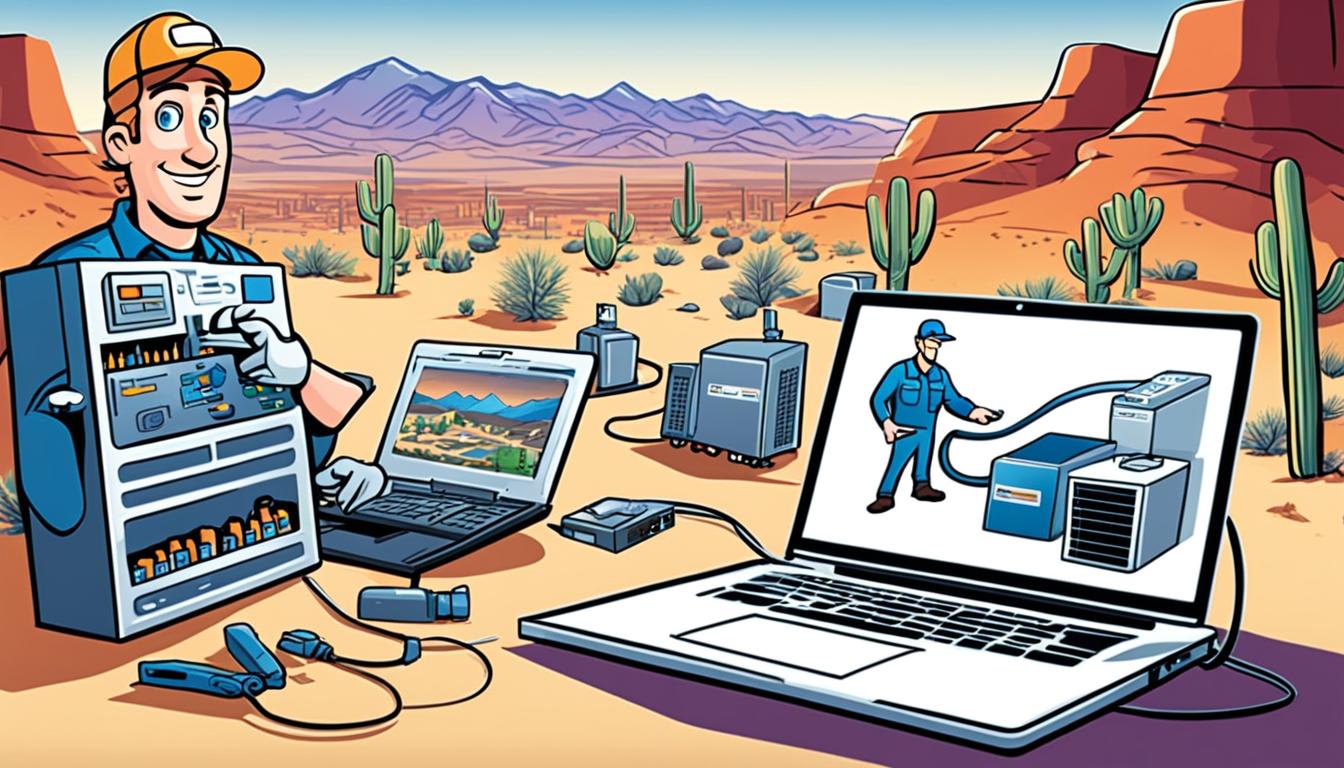Imagine this scenario: It’s a scorching summer day, and your air conditioning system suddenly stops working. The heat becomes unbearable, and you desperately search for a solution. After some troubleshooting, you suspect that there might be a leak in your AC system. Determined to fix it yourself, you decide to use a leak detector for the first time. But, little do you know, there are common mistakes that inexperienced users often make when using these devices.
Before you embark on your leak detection journey, it’s essential to understand the potential pitfalls and errors that can arise. By avoiding these common mistakes, you can save yourself valuable time, effort, and resources while ensuring a successful leak detection process.
Key Takeaways:
- Using the wrong leak detection method can lead to inaccurate results.
- Testing at the wrong point in the production process can result in wasted time and resources.
- Testing a contaminated part can lead to false results.
- Ignoring temperature changes can affect the accuracy of leak tests.
- Fluctuating test pressures can affect the reliability of leak detection.
Why Electronic Leak Detectors Are Essential for AC Technicians
Electronic leak detectors are essential diagnostic tools for AC technicians. They offer several advantages over traditional leak detection methods, helping technicians detect even the smallest leaks and identify various cooling agents with accuracy and precision.
One of the key benefits of electronic leak detectors is their ability to pinpoint the exact location of a leak. This makes it easier for technicians to repair the leak and ensure the effectiveness of the entire leak detection process. By knowing the precise location of the leak, the necessary repairs can be made efficiently, saving time and resources.
However, it is important to understand the limitations and sensitivity of electronic leak detectors to avoid potential errors in leak detection. Regular maintenance, including sensor replacement, is necessary to maintain the accuracy of the detectors. Additionally, proper use of electronic leak detectors is crucial. Technicians should keep the detectors away from moisture and move slowly and steadily during the detection process for optimal results.
Familiarity with the properties and behavior of different refrigerants can enhance the effectiveness of leak detection. Different refrigerants have unique characteristics that affect their detection, and being aware of these properties can help technicians accurately identify leaks.
In some cases, combining different leak detection methods can provide more accurate results. Electronic leak detectors can be complemented by other techniques like bubble tests to enhance the overall effectiveness of leak detection.
Before using any electronic leak detector, it’s essential to familiarize yourself with the specific detector being used, including its limitations and capabilities. Understanding how the detector works and how to interpret its results will help you avoid errors in leak detection.
Overall, electronic leak detectors are invaluable tools that can greatly improve efficiency and accuracy in AC maintenance and repairs. By understanding their limitations, properly maintaining them, and using them in conjunction with other techniques, technicians can ensure successful leak detection and efficient HVAC system performance.
The Advantages of Electronic Leak Detectors
Electronic leak detectors offer several advantages over traditional leak detection methods:
- Ability to detect even the smallest leaks
- Precision in pinpointing the exact location of a leak
- Identification of various cooling agents
- Enhanced efficiency in AC maintenance and repairs
By utilizing these advanced tools, AC technicians can improve their leak detection capabilities and provide better service to their customers.
Best Practices for Using Electronic Leak Detectors
When using electronic leak detectors, it is important to follow best practices to maximize their effectiveness:
- Maintain the detector regularly by replacing sensors and keeping it away from moisture.
- Move slowly and steadily during the detection process to ensure accurate results.
- Understand the properties and behavior of different refrigerants to enhance detection capabilities.
- Consider using a combination of different leak detection methods for more accurate results.
- Familiarize yourself with the specific detector being used and its limitations and capabilities.
By following these best practices, AC technicians can avoid common pitfalls in leak detection and improve the efficiency and accuracy of their work.
Best Practices for Using Leak Detectors in HVACR Applications
To ensure accurate results when using leak detectors in HVACR applications, it is essential to follow best practices and avoid common mishaps in leak detection. Understanding the limitations and sensitivity of your leak detector is crucial to avoid top blunders that can lead to improper use and inaccurate readings.
Regularly checking and calibrating your leak detector using a reference bottle is an important step to ensure its reliability before each use. Proper maintenance, including sensor replacement and keeping the detector away from moisture, is also essential for accurate and consistent results.
When performing leak detection, it is advisable to move slowly and steadily during the detection process. This helps pinpoint leaks more accurately and minimizes the risk of missing potential leaks. Starting from the top and working down is also crucial, as most refrigerants are heavier than air.
Repeating the detection process multiple times and using bubbles to confirm the location of a leak can help avoid false positives or prematurely condemning a component based on one detection. Understanding the specific operating pressure and leak rate requirements for a particular application is necessary for accurate interpretation of results.
Considering factors such as stringer leaks and gross leaks and using appropriate testing methods can further improve the effectiveness of leak detection. Regularly checking the accuracy and functionality of the test system, including inspecting the test chamber for leaks and using a calibration leak, is also important for obtaining reliable results.
Finally, proper training and knowledge of leak detection techniques and equipment are crucial to avoid common mishaps and ensure accurate leak detection in HVACR applications. By following these best practices, you can minimize errors and maximize the effectiveness of your leak detection process.





0 Comments